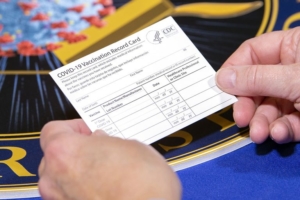NCL lends support to Bolstering Innovative Options to Save Immediately on Medicines (BIOSIM) Act, H.R. 2815
September 24, 2021
Media contact: National Consumers League – Carol McKay, carolm@nclnet.org, (412) 945-3242
Washington, DC—The National Consumers League (NCL) is pleased to support the Bolstering Innovative Options to Save Immediately on Medicines (BIOSIM) Act (H.R. 2815), introduced by Representatives Adam Kizinger (R-IL) and Kurt Schrader (D-OR). NCL believes that expanding the use of biosimilars is a safe and effective option for making prescription drugs more affordable for all.
In the midst of a pandemic, consumers across the country are unable to receive necessary care for many reasons — the most prominent being high costs. Biologics are among the fastest-growing segments of the prescription product market, and costly to the patients who rely on them. What is unique about biologic treatments is that they are directly able to combat the underlying cause of a disease. NCL is committed to educating consumers about the value of biosimilars as alternatives to biologics.
Consumers are largely unaware that similar to generic prescription drugs, biosimilars are the generic equivalent to their biologic counterpart. As with generic prescription drugs, FDA-approved biosimilars have no clinically meaningful differences from their reference biologics. Biosimilars function in the same way as biologics and are subject to the same rigorous testing by the FDA to ensure their safety. The FDA has approved biosimilar medications to treat conditions such as cancer, diabetes, Crohn’s disease, colitis, rheumatoid arthritis, psoriasis, and more. Biosimilars can enter the market once the patent protections for brand-name biologics expire, and when multiple options exist on the market, competition drives prices down.
NCL believes that biosimilar treatment options are a great way to ensure that cost is not a factor that inhibits access to care. Currently, Medicare beneficiaries pay 20 percent coinsurance on Part B drugs, which includes both biologics and biosimilars. On average, biosimilars cut the price of biologics by about 30 percent, which provides beneficiaries with significantly lower prices than the biologic alternative. While biologics make up a small percentage of the total number of drugs on the market, and just 2 percent of prescriptions filled, they represent 40 percent of all drug spending.
Currently, Medicare reimburses participating physicians based on the average sales price (ASP) of a drug with an additional 6 percent of the reference price. However, because biosimilars are cheaper than biologics, physicians more often prescribe the higher-priced treatment. NCL supports increasing the reimbursement percentage for biosimilars as a way to incentivize physicians to prescribe biosimilars. The BIOSIM Act would maintain the 6 percent reimbursement for prescribing a biologic and increase the return for prescribing biosimilars to 8 percent for a five-year period.
The BIOSIM Act provides the needed incentives to boost utilization by providers to prescribe biosimilars and makes it cheaper for beneficiaries to receive the care they require. “If enacted, this policy would not only provide significant savings to consumers, it would also drive down Medicare spending overall,” said NCL Director of Health Policy Jeanette Contreras. “Congress should act on passing the BIOSIM Act in order to increase access to safe and effective biosimilars that provide consumers an affordable alternative to high-cost biologics.”
About the National Consumers League






 By NCL Director of Health Policy Jeanette Contreras
By NCL Director of Health Policy Jeanette Contreras












